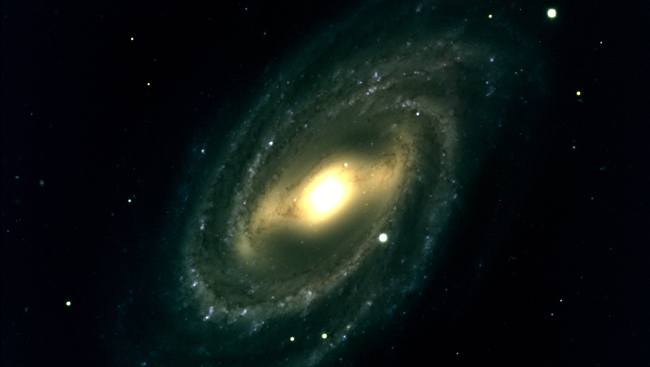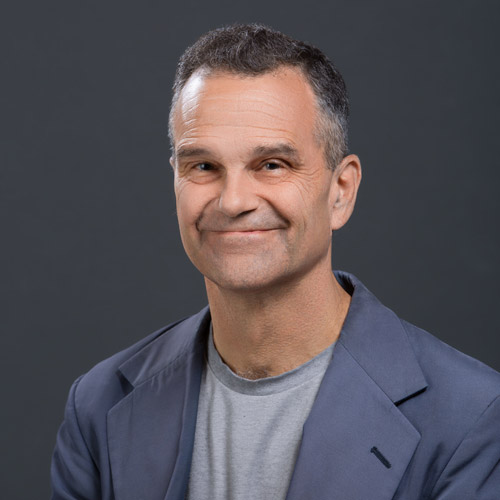Eye on the Distant Sky
Discovery Channel Telescope transmits “first light”

The galaxy M109, 84 million light years away, as seen from the new Discovery Channel Telescope that BU helped finance. Courtesy Lowell Observatory
For just a one-fifth investment in the Discovery Channel Telescope, BU has doubled the distance it can stargaze, now that the $53 million super-scope is operating. And the first man to walk on the moon keynoted the celebration.
Neil Armstrong headlined the First Light Gala on July 21, at which attendees—including Virginia Sapiro, dean of Arts & Sciences, flanked by a phalanx of CAS astronomers—viewed the first astronomical images taken by the new telescope. Operated by the 118-year-old Lowell Observatory and located about an hour from its headquarters in Flagstaff, Arizona, the telescope is named for the cable channel that partially funded and oversaw its construction. The device will provide images for the channel’s science programming; BU astronomers will get 45 nights each year with the telescope, in perpetuity, in exchange for the $10 million the University contributed to the project.
The attendees saw the scope’s views of other galaxies, including M109, a spiral star system 84 million light years away, in the constellation Ursa Major. They also got a bright-morning look at Venus through the eyepiece, says James Jackson, associate dean for research and outreach at CAS.

“Even in the daylight, we saw a beautiful image of Venus, showing its crescent phase,” he says. “The sharpness of the images recorded there rivals the best astronomical sites in the world.” The acuity bodes well for future research, since the optical systems for even longer-range stargazing are not yet operative, Jackson says. The Discovery Channel Telescope will permit him and his colleagues “to do larger, long-term projects that are simply impossible on national facilities. That in turn will lead to the ability to make important discoveries, and will greatly improve our ability to secure grant funding.”
Armstrong recapped the harrowing lunar expedition he was part of 43 years ago this month for the gala attendees. “There’s something special about controlling a $50 million-plus machine and getting results that have never before been achieved,” he cracked, analogizing his Apollo 11 craft and the new scope.
BU’s collaboration in the venture “will open up enviable opportunities for high-level science for our astronomers,” says Sapiro, while enhancing prospects for science education and communication for the rest of the University. “It also opens up fascinating possibilities for connections with the other partners and associates” at the observatory, a private non-profit best known for its discovery of Pluto in 1930. For example, under the arrangement, College of Communication students and professors in science journalism will produce documentaries for the Discovery Channel about research involving the telescope.
Seven years in the making and 4.3 meters (14 feet) long, Discovery is the fifth largest scope in the continental United States. It dwarfs the observatory’s Perkins Telescope, used by BU since 1998. (The University will continue to use the Perkins scope as well.)
BU astronomers will not only see farther with the Discovery Channel Telescope, they’ll get a clearer look at faraway objects. Until now, the astronomy department was the only freestanding one at a major U.S. university that lacked guaranteed use of such a powerful telescope. When the Perkins scope was insufficient, astronomers here had to queue up with colleagues elsewhere to use national facilities.

Comments & Discussion
Boston University moderates comments to facilitate an informed, substantive, civil conversation. Abusive, profane, self-promotional, misleading, incoherent or off-topic comments will be rejected. Moderators are staffed during regular business hours (EST) and can only accept comments written in English. Statistics or facts must include a citation or a link to the citation.